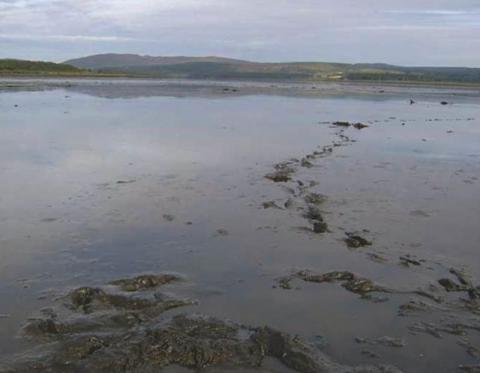Intertidal mudflats
Mudflats are found in the most sheltered areas, within the upper reaches of estuaries, sea lochs and voes. The sediments are finer (silt and clay) and have a high organic content. The resultant high microbial activity can result in an anoxic layer forming close to the surface. Fully marine mudflats are dominated by burrowing polychaete worms, such as lugworms, bivalve molluscs (e.g. Baltic tellin) and mud shrimps. The upper estuaries, where there is reduced salinity, are dominated by oligochaete worms. Found all round the Scottish coast, some of the most notable examples are at Montrose Bay, the Firth of Tay, the Firth of Forth, the Inner Moray Firth and the Cromarty Firth. Mudflats are much undervalued because they tend not to be seen to be useful for recreation or other activities, yet they are vital habitat. They provide a natural sea defence by absorbing wave energy and are an important sink for organic material. They also are an important habitat for many juvenile fish including commercial species such as plaice and a vital habitat for thousands of wintering waders and wildfowl.


